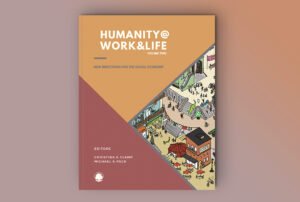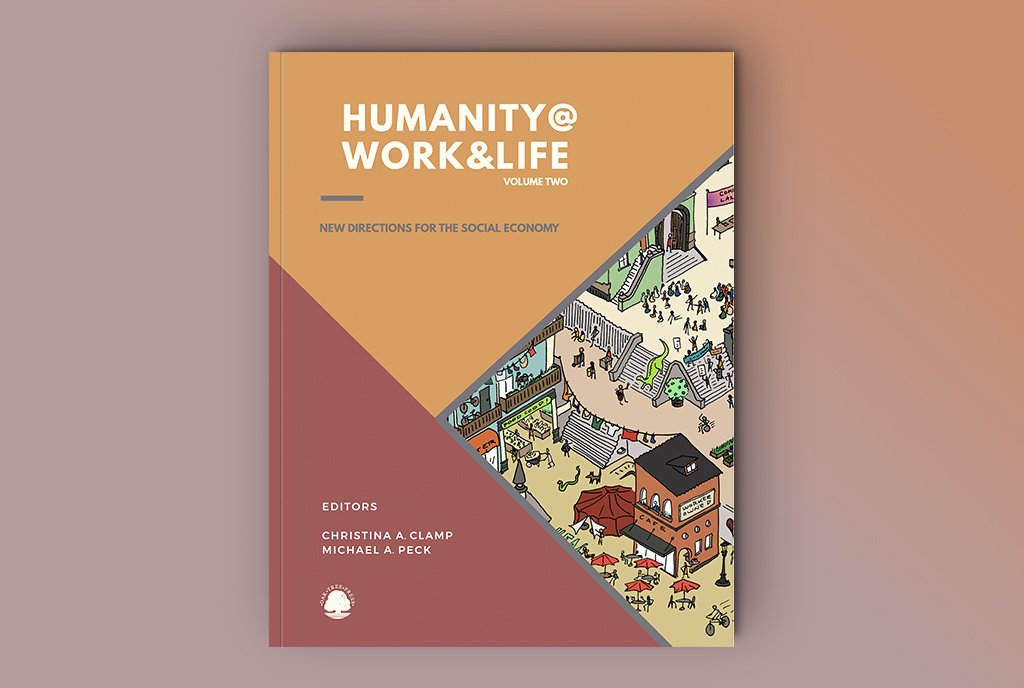
This is the third article from A Green New Deal on the Ground, a series produced with Climate and Community Project, a progressive climate policy think tank developing cutting-edge research at the climate and inequality nexus. The series examines how Green New Deal initiatives aim to create climate policy that positively impacts everyday life. It also explores the political coalitions and campaigns centering environmental justice and equity in decarbonization across the US and champions both broad-based movement building and institutional power to harness resources and push for change.
Last week, United Teachers Los Angeles, the union representing 35,000 members in the Los Angeles Unified School, went on a three-day strike in solidarity with SEIU Local 99, a union representing 30,000 striking bus drivers, teachers’ aides, custodial workers, and special staff. UTLA is in the middle of negotiating contracts, demanding not only raises but student counselors and school improvements for “proactive climate justice and mitigation.” The solidarity strike demonstrates a united front in Los Angeles committed to respect, dignity, and living wages to benefit not only education workers, but the students they serve.
Public school teachers are not just educators. They are a workforce uniquely positioned to participate in political struggles in and beyond their schools. From Columbus to Seattle, teachers have been striking in response to long-term frustrations over the state of their profession and to address long-term and emerging injustices, including, increasingly, those created by the climate crisis. Taking on issues from housing segregation to mental health services to sustainable transportation in their contract fights, these workers are showing that labor power is key to fighting for climate justice in communities.
As both public-sector and care workers, teachers are essential to society’s functioning. They are responsible for educating the generation that will be most affected by climate change. But they do so while bearing the brunt of education privatization and state austerity policies that have stripped down the public-sector workforce, with districts relying heavily on property taxes and local revenues to fund public schools—a model that disproportionately disadvantages schools in low-resource, high-need communities.
The Need for an Education Policy Overhaul
It’s no secret that the US K-12 public education system is underfunded, understaffed, and under-resourced. As the climate crisis intensifies, poorer districts are even less able to provide healthy learning and working environments. Disparities in the education system map clearly onto racial and class disparities. Poorer districts are less resourced, face tighter budgets, and struggle to provide high-quality education and healthy, sustainable living and working conditions. In such districts—many of which already experience environmental racism—students and workers must deal with inferior HVAC systems, leaded water in drinking fountains, and toxic fumes from diesel school buses.
Indeed, the entire system is in dire need of an overhaul. In 2021, the Government Accountability Office estimated that 54 percent of all public school districts required updates of at least two major systems, including HVAC systems, roofing, and structural integrity. One in four districts required updates of at least six systems for proper functioning.
A public education system that reduces historic inequities among students and transforms school buildings into healthy, safe places to learn, work, and play—paired with strong labor supports—would bring countless benefits to students and staff, from increased physical wellbeing to better educational outcomes. The Green New Deal for K-12 Public Schools outlines such a vision for a green, just education system, with recommendations for school-based policy and programs and federal investment in climate resiliency and decarbonization. With each degree of warming, the urgency of enacting this vision grows.
The Exodus of Teachers
Public discourse often blames teachers and their unions for the institutional-level failings of a defunded public education system. Along with poor pay and stressful working conditions, this has led to rising frustration and a burnout crisis, demonstrated by the mass exodus from the teaching profession over the past three years. According to a 2022 survey by the National Education Association, more than 55 percent of educators plan to quit their jobs earlier than anticipated. Other care sectors, like nursing and child care, have seen similar withdrawals from the workforce.
This “crisis of care” is often considered separately from the climate crisis. But teachers’ movements for climate and labor justice have shown that mass, worker-led, grassroots movements have the power to push society toward a just transition. Indeed, the workforce driving a green transition will include not only energy and industry workers but also care and social workers.
To accomplish large-scale projects, from retrofitting buildings to decarbonizing transportation, the US must create coordinated industrial policies and rebuild state capacity. State and municipal public workforces that provide essential services, from sanitation and transportation to housing and education, must be revived and included for that to happen equitably. Teachers are not only critical to implementing climate policy—they can drive transformative changes through their organized labor power.
Sign up for our free newsletters
Subscribe to NPQ's newsletters to have our top stories delivered directly to your inbox.
By signing up, you agree to our privacy policy and terms of use, and to receive messages from NPQ and our partners.
A Green New Deal for Los Angeles Schools
In California, students and workers in public schools experience the effects of the climate crisis daily. In September 2022, California experienced a record-breaking heat wave that shortened school days and forced the cancellation of outdoor activities. In 2020, wildfires—the result of both forest mismanagement and climate-change induced changes to weather patterns—generated 120 times more pollution than ground transportation. Smoke from wildfires can be up to 10 times more toxic than other forms of air pollution and has been linked to increased asthma rates among children. Already, in California, asthma-related absences are the leading cause of missed school days, which are linked to poorer educational outcomes. California is one of six states where absences can reduce school funding—a policy that disadvantages districts with more low-income and unhoused students.
In addition to impacting the health and educational outcomes of students, intensified heat waves, droughts, and wildfires threaten social and mental wellbeing. A survey of Sonoma County students following the severe 2020 wildfire season found that 77 percent of students experienced stress, anxiety, and depression to be significant obstacles to learning. Repeated exposure to extreme weather events compounds post-traumatic stress, especially for younger students. Public schools need more funding, higher staffing levels, and clear plans to mitigate environmental health harms to adequately support students and workers through the climate crisis.
In Los Angeles, United Teachers of Los Angeles has embraced climate justice as a core workplace issue. Through years of organizing, the union has demonstrated the power of engaging a coalition of workers, students, community members, and community organizations to win broad demands outside of the traditional scope of bargaining. This “Bargaining for the Common Good” approach to organizing recognizes workers as whole people with needs outside of the workplace, and community members as participants in struggles for strong contracts. To ensure maximum leverage against the school district, UTLA engaged in a years-long process of preparation for strong contract campaigns that include demands for racial justice and environmental health.
In 2019, the union’s massive six-day strike led to a series of contract victories, including caps on and annual reductions in class sizes; funding for additional counselors, school nurses, and librarians; and increased green space on campuses. In 2020, the union began a process that led to a member-wide vote to remove the Los Angeles School Police Department—a force of 400 officers that was funded by $70 million of the district’s $7.9 billion budget—from public school campuses. Union leadership pushed for the divested funds to be used for mental-health support and counselors, leading to the creation of 800 new positions dedicated to promoting student wellbeing. This invest-divest formula exemplifies the ability of unions to negotiate economic arrangements that multiply benefits beyond membership and into the greater community.
Building on this successful platform of racial justice demands, UTLA and its allies are now demanding the district bargain over climate justice proposals as part of the union’s “Beyond Recovery” platform. Proposals for “Healthy Green Public Schools” reflect many of the goals of the Green New Deal for K-12 Public Schools, including green spaces and food gardens for students and community members; conversion of internal-combustion engine school bus fleets to electric buses; the “installation of solar panels, use of school land for collection of clean water, [and] creation of schools as cooling zones,” equipping schools to serve as resiliency centers during climate emergencies; and increasing the availability of healthy, sustainable food options to address food insecurity, nutrition, and worker-friendly food sources. The platform also includes funding for “climate coaches,” who would help support student mental health.
Currently, the district is refusing to bargain beyond economic contract articles, but with its 2019 campaign that won racial justice demands, UTLA has demonstrated the power of engaging a broad-based coalition in a labor struggle that is able to win community-level benefits.
Care Workers Are a Labor Vanguard
Built on years of deep organizing, coalition building, and local development, campaigns to transform schools have advanced despite decades of austerity and legal limitations on public-sector union bargaining power. These have included limits on the right to strike, which have rendered workers unable to translate negotiating power into contract items at the bargaining table and worn workforces down to bare-boned capacity. In the 2018 wave of wildcat strikes in “right-to-work states,” where laws severely limit union activity, public educators wielded the strike’s power, even without legal authorization, to advance common-good causes.
Teachers’ unions nationwide have been championing the priorities of the Green New Deal through common-good bargaining and contract campaigns. The Chicago Teachers Union (CTU-AFT Local 1) has bargained for school transportation assistance for low-income and unhoused students, prioritization of repairs of existing buildings over new construction, and the removal of toxic pipes and paints from school buildings. After a 24 percent drop in Oklahoma’s per-student spending from 2008 and 2015, the Oklahoma Education Association, a statewide union, organized work actions demanding that the state increase funding for education via “a higher tax on oil production, gas production, and motor fuels to fund public education.” (At the time, Oklahoma’s state tax on fossil fuels was the lowest in the nation.)
Unions have power beyond contract campaigns, especially when they build working-class coalitions. For example, Climate Jobs Rhode Island, a coalition of climate and labor groups formed in 2021, has been pressuring state officials to include climate provisions in all new funding for public schools and for all public schools in the state to have 100 percent net-zero emissions by 2050, with demonstrated progress in the years leading up to 2030. The coalition also aims to bring clean energy heating systems to all public and publicly funded buildings by 2050. Other goals include expanding public transportation and offshore wind and solar power networks. This comprehensive campaign for a statewide just transition centers workers and communities most affected by the climate crisis.
The Green New Deal framework goes beyond top-down climate policy—it is a framework for a holistic transition to a just future that takes a full view of communities’ working and living conditions. School systems can continue to compound inequities, or they can invest in schools so that they function as centers of healthy, safe, and sustainable communities. Education workers are teaching us that the path to transformative change for everyone can begin right outside the classroom.











